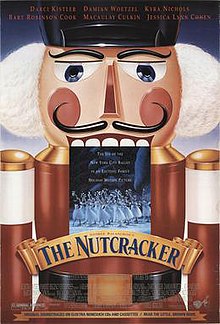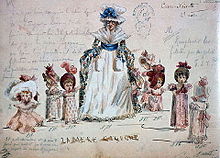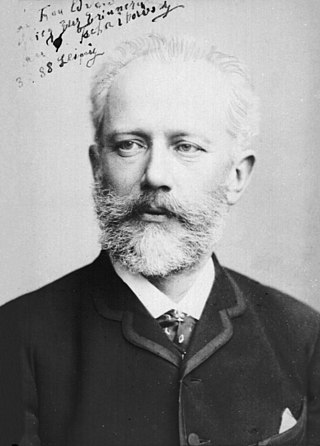
The Nutcracker, Op. 71, is an 1892 two-act classical ballet by Pyotr Ilyich Tchaikovsky, set on Christmas Eve at the foot of a Christmas tree in a child's imagination. The plot is an adaptation of E. T. A. Hoffmann's 1816 short story The Nutcracker and the Mouse King. The ballet's first choreographer was Marius Petipa, with whom Tchaikovsky had worked three years earlier on The Sleeping Beauty, assisted by Lev Ivanov. Although the complete and staged The Nutcracker ballet was not as successful as had been the 20-minute Nutcracker Suite that Tchaikovsky had premiered nine months earlier, The Nutcracker soon became popular.
The School of American Ballet (SAB) is the associate school of the New York City Ballet, a ballet company based at the Lincoln Center for the Performing Arts in New York City. The school trains students from the age of six, with professional vocational ballet training for students aged 11–18. Graduates of the school achieve employment with leading ballet companies worldwide, and in the United States with New York City Ballet, American Ballet Theatre, Boston Ballet, San Francisco Ballet, Miami City Ballet, Pacific Northwest Ballet and Houston Ballet.

Darci Kistler is an American ballerina. She is often said to be the last muse for choreographer George Balanchine.

Melissa Hayden was a Canadian ballerina at the New York City Ballet.
Moscow Ballet has toured the United States and Canada during the holiday season since 1993 and is exclusively represented by Talmi Entertainment Inc for these tours. There are 70 to 80 Russian-trained classical dancers on the annual North American tour who fly in from the former republic of Russia. Stanislav Vlasov, a former principal artist of the Bolshoi Ballet, was the first artistic director on the North American tour in 1993. Vlasov's debut in the United States was at Carnegie Hall in 1957.

"The Nutcracker and the Mouse King" is a novella-fairy tale written in 1816 by Prussian author E. T. A. Hoffmann, in which young Marie Stahlbaum's favorite Christmas toy, the Nutcracker, comes alive and, after defeating the evil Mouse King in battle, whisks her away to a magical kingdom populated by dolls. The story was originally published in Berlin in German as part of the collection Kinder-Märchen, Children's Stories, by In der Realschulbuchhandlung. In 1892, the Russian composer Pyotr Ilyich Tchaikovsky and choreographers Marius Petipa and Lev Ivanov turned Alexandre Dumas' adaptation of the story into the ballet The Nutcracker.
Sarah Van Patten is an American ballet dancer. She began an apprenticeship at the Royal Danish Ballet at age 15. In 2001, at age 17, she became the youngest ever dancer to receive a contract at the company. Later that year, she joined the San Francisco Ballet as a soloist, and was promoted to principal dancer in 2007. She retired from ballet in 2022.

Maria Olegovna Kochetkova is a Russian ballet dancer. She was a principal dancer with the San Francisco Ballet between 2007 and 2018, and with the American Ballet Theatre between 2015 and 2017. After that, she became a freelance dancer for several years, before joining the Finnish National Ballet in the 2020/21 season.

The Nuttiest Nutcracker is a 1999 computer-animated direct-to-video Christmas film loosely based on the 1892 ballet The Nutcracker. The film was directed by Harold Harris and starred the voices of Jim Belushi, Cheech Marin, and Phyllis Diller. This film follows a group of anthropomorphic fruits and vegetables. Their goal is to help the Nutcracker's army get a star to the top of a Christmas tree before midnight and stop a rodent army from destroying Christmas. The film was released on home video by Columbia TriStar Home Video in 1999. The film aired on CBS December 4, 1999, in addition to being shown on cable.
Miranda Weese is an American former ballet dancer, teacher and ballet master. She joined the New York City Ballet in 1993 and was promoted to principal dancer in 1996. In 2007, she left to perform with the Pacific Northwest Ballet, first as a guest artist, then joined the company as a principal dancer, before retiring in 2010. In 2017, she joined the Boston Ballet as a children's ballet master.
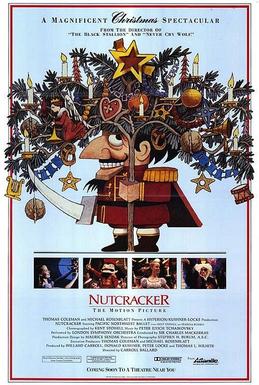
Nutcracker: The Motion Picture, also known as Pacific Northwest Ballet's Nutcracker or simply Nutcracker, is a 1986 American Christmas performing arts film produced by Pacific Northwest Ballet in association with Hyperion Pictures and Kushner/Locke, and released theatrically by Atlantic Releasing Corporation. It is a film adaptation of 1892 ballet The Nutcracker by Pyotr Ilyich Tchaikovsky and the 1816 short story "The Nutcracker and the Mouse King" by E. T. A. Hoffmann.
Choreographer George Balanchine's production of Peptipa and Tchaikovsky's 1892 ballet The Nutcracker is a broadly popular version of the ballet often performed in the United States. Conceived for the New York City Ballet, its premiere took place on February 2, 1954 at City Center, New York, with costumes by Karinska, sets by Horace Armistead and lighting and production by Jean Rosenthal.
The Hard Nut is a ballet set to Tchaikovsky's 1892 The Nutcracker and choreographed by Mark Morris. It took its inspiration from the comic artist Charles Burns, whose art is personal and deeply instilled with archetypal concepts of guilt, childhood, adolescent sexuality, and poignant, nostalgic portrayals of post-war America. Morris enlisted a team of collaborators to create a world not unlike that of Burns’ world, where stories take comic book clichés and rearrange them into disturbing yet funny patterns.
Tchaikovsky's now-classic 1892 ballet The Nutcracker received its first complete production in the U.S. on 24 December 1944, performed by the San Francisco Ballet. This production used the ballet's original plot and was choreographed by Willam Christensen, who danced the role of the Cavalier. Gisella Caccialanza, the wife of Lew Christensen, danced the role of the Sugar Plum Fairy. The staging was a huge success and one critic wrote: "We can't understand why a vehicle of such fantastic beauty and originality could be produced in Europe in 1892 with signal success [a factually erroneous claim] and never be produced in its entirety in this country until 1944. Perhaps choreographers will make up for lost time from now on." The company was the first in the U.S. to make the ballet an annual tradition, and for ten years, the only company in the United States performing the complete ballet, until George Balanchine's production opened in New York in 1954.

The Slutcracker is a burlesque, satirical version of the 1892 ballet The Nutcracker that is the creation of Lipstick Criminals troupe director Vanessa White. It has been performed in Somerville, Massachusetts, and Montreal, Quebec, Canada. The performance incorporates burlesque and tango dancers, drag kings, hoopers, ballerinas, acrobats, and belly dancers in a retelling of Pyotr Ilyich Tchaikovsky's ballet from the point of view of a young woman who experiences a sexual awakening during a holiday dream-like sequence.
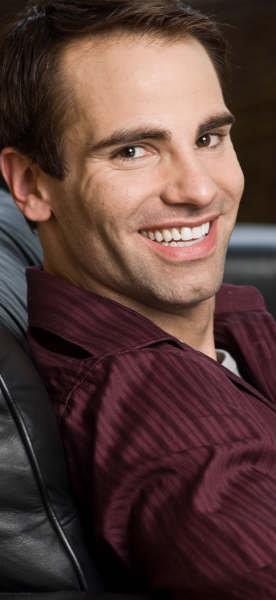
Darren John Anderson is an internationally acclaimed ballet dancer. He is also known for his work in contemporary and classical choreography.

The Nutcracker and the Four Realms is a 2018 American fantasy adventure film directed by Lasse Hallström and Joe Johnston and produced by Mark Gordon and Larry Franco, from a screenplay by Ashleigh Powell. Co-produced by Walt Disney Pictures and The Mark Gordon Company, it is a retelling of E. T. A. Hoffmann's 1816 short story "The Nutcracker and the Mouse King", as well as of Marius Petipa and Pyotr Ilyich Tchaikovsky's 1892 ballet The Nutcracker, about a young girl who is gifted a locked egg from her deceased mother and sets out in a magical land to retrieve the key. The film stars Keira Knightley, Mackenzie Foy, Eugenio Derbez, Matthew Macfadyen, Richard E. Grant, Misty Copeland, Helen Mirren, and Morgan Freeman.

"The Nutcracker" was a special Christmas presentation of the CBS television series, Playhouse 90, featuring Tchaikovsky's ballet performed by the New York City Ballet, choreographed by George Balanchine, and conducted by Robert Irving. It was broadcast live and in color on December 25, 1958.
Elena Lobsanova is a Russian-Canadian ballet dancer. She joined the National Ballet of Canada in 2004 and was promoted to principal dancer in 2015. In 2020, she joined the Miami City Ballet.
